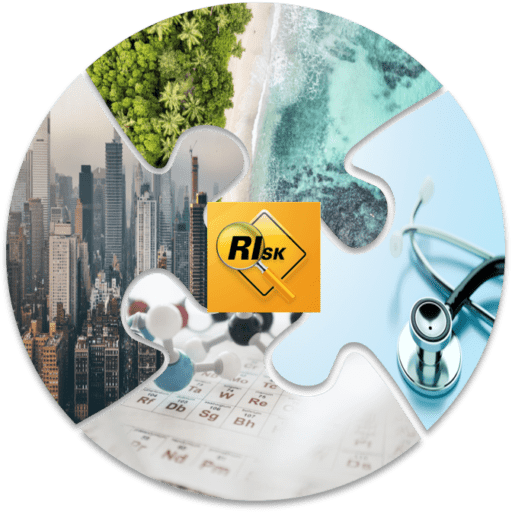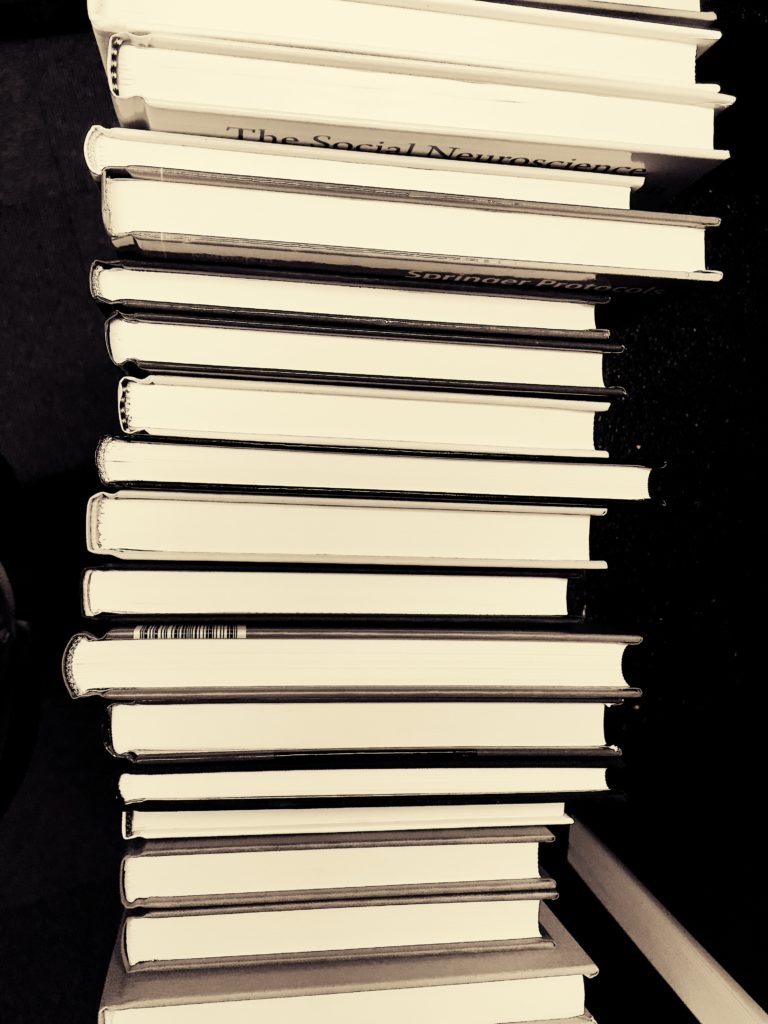
Publications
Ampatzoglou, A.; Gruszecka-Kosowska, A.; Torres-Sánchez, A.; López-Moreno, A.; Cerk, K.; Ortiz Sandoval, P.; Monteoliva-Sánchez, M.; Aguilera M. 2022. Incorporating the gut microbiome in the risk assessment of xenobiotics and the identification of beneficial components for One Health. Frontiers in Microbiology, 13, 872583. link.
Mazur-Włodarczyk, K.; Gruszecka-Kosowska, A. 2022. Conventional or organic?: motives and trends in Polish vegetable consumption. International Journal of Environmental Research and Public Health, 19, 8, 4667, 1–20. link.
Ortiz, P.; Torres-Sánchez, A.; López-Moreno, A.; Cerk, K.; Ruiz-Moreno, Á.; Monteoliva-Sánchez, M.; Ampatzoglou, A.; Aguilera, M.; Gruszecka-Kosowska, A. 2022. Impact of cumulative environmental and dietary xenobiotics on human microbiota: Risk assessment for One Health. Journal of Xenobiotics, 12, 1, 56-63. link.
Mikoda B., Potysz A., Gruszecka-Kosowska A., Kmiecik E., Tomczyk A. 2021. Spent sulfuric acid plant catalyst: valuable resource of vanadium or risky residue?: process comparison for environmental implications. Environmental Science and Pollution Research, 28, 42, 59358–59367. link.
Aleksander-Kwaterczak U., Kostka A., Leśniak A. (2021). Multiparameter assessment of select metal distribution in lacustrine sediments. Journal of Soils and Sediments, 21, 1, 512–529. link.
Kostka A., Leśniak A. (2021). Natural and anthropogenic origin of metals in lacustrine sediments; assessment and consequences – a case study of Wigry Lake (Poland). Minerals, 11, 2, 158, s. 1–21. link.
Kostka A., Leśniak A. (2021). Spatial and geochemical aspects of heavy metal distribution in lacustrine sediments, using the example of Lake Wigry (Poland). Chemosphere, 240, 124879, 1–12. link.
Potysz A., Mikoda B., Napieraj M. (2021). (Bio)dissolution of glassy and diopside-bearing metallurgical slags: experimental and economic aspects. Minerals, 11, 3, 262, 1–19. link.
Strzebońska M., Gruszecka-Kosowska A., Kostka A. (2020). Chemistry and microbiology of urban roof runoff in Kraków, Poland with ecological and health risk implications. Applied Sciences (Basel), 10, 23, 8554, 1–20. link.
Mikoda B., Potysz A., Gruszecka-Kosowska A., Kmiecik E., Tomczyk A. (2020). Spent sulfuric acid plant catalyst: valuable resource of vanadium or risky residue? Process comparison for environmental implications. Environmental Science and Pollution Research, 28, 59358–59367. link.
Mikoda B., Potysz A., Kucha H., Kmiecik E. (2020). Vanadium removal from spent sulfuric acid plant catalyst using citric acid and Acidithiobacillus thiooxidans. Archives of Civil and Mechanical Engineering, 20, 132, 1–14. link.
Traczyk P., Gruszecka-Kosowska A. (2020). The condition of air pollution in Kraków, Poland, in 2005-2020, with health risk assessment. International Journal of Environmental Research and Public Health, 17, 17, 6063, 1–23. link.
Janoska O., Gruszecka-Kosowska A. (2020). Water quality and Human Health Risk Assessment: a case study of the Czarna Przemsza River source in Zawiercie, Poland. Human and Ecological Risk Assessment, 26, 3, 757–781. link.
Gruszecka-Kosowska A. (2020). Significance of environmental input data in risk assessment analyses. Journal of Xenobiotics, 10, 2, 36–38. link.
Gruszecka-Kosowska, A. (2020). Human health risk assessment and potentially harmful element contents in the cereals cultivated on agricultural soils. International Journal of Environmental Research and Public Health, 17, 5, 1674. link.
Gruszecka-Kosowska, A., Baran, A., Wdowin, M., Mazur-Kajta, K., Czech, T. (2020). The contents of the potentially harmful elements in the arable soils of southern Poland, with the assessment of ecological and health risks: A case study. Environmental Geochemistry and Health, 42, 419–442. link.
Gruszecka-Kosowska A. (2020). Deposited particulate matter enrichment in heavy metals and related health risk: a case study of Kraków, Poland. Proceedings, 44, 1, 1, IECEHS-2 2019. link.


Gruszecka-Kosowska, A. (2019). Potentially harmful element concentrations in the vegetables cultivated on arable soils, with human health risk implications. International Journal of Environmental Research and Public Health, 16, 20, 4053. link.
Gruszecka-Kosowska, A. (2019). Human health risk assessment and potentially harmful element contents in the fruits cultivated in the southern Poland. International Journal of Environmental Research and Public Health, 16, 24, 5096. link.
Gruszecka-Kosowska, A., Baran, A., Mazur-Kajta, K., Czech, T. (2019). Geochemical fractions of the agricultural soils of southern Poland, with the assessment of the potentially harmful element mobility. Minerals, 9, 11, 674. link.
Kostka A., Strzebońska M., Sobczyk M., Zakrzewska M., Bochenek A. (2019). The effect of de-icing roads with salt on the environment in Krakow (Poland). Geology, Geophysics & Environment, 45, 3, 195–205. link.
Mikoda B., Potysz A., Kmiecik E. (2019). Bacterial leaching of critical metal values from Polish copper metallurgical slags using Acidithiobacillus thiooxidans. Journal of Environmental Management, 236, 436–445. link.
Gruszecka-Kosowska A. (2018). Assessment of the Kraków inhabitants’ health risk caused by the exposure to inhalation of outdoor air contaminants. Stochastic Environmental Research and Risk Assessment, 32, 2, 485–499. link.
Gruszecka-Kosowska A., Baran A., Jasiewicz Cz. (2018). Content and health risk assessment of selected elements in commercially available fish and fish products. Human and Ecological Risk Assessment, 24, 6, 1623–1641. link.
Baran A., Gruszecka-Kosowska A., Kołton A., Jasiewicz Cz., Piwowar P. (2018). Content and health risk assessment of selected elements in the Yerba mate (Ilex paraguariensis, St. Hillaire). Human and Ecological Risk Assessment, 24, 4, 1092–1114. link.
Mikoda B., Gruszecka-Kosowska A. (2018). Mineral and chemical characteristics, textural parameters, and the mobility of the selected elements of flotation waste, originating from the Polish copper-mining industry. Human and Ecological Risk Assessment, 24, 5, 1216–1232. link.
Mikoda B., Gruszecka-Kosowska A., Klimek A., Tomczyk A. (2018). Air pollution control and flue gas desulfurization residues from Polish copper smelting facility as adsorbents of Pb(II) and Cu(II) from aqueous solutions. Environmental Science and Pollution Research, 25, 31, 31520–31534. link.
Mikoda B., Kucha H., Potysz A., Kmiecik E. (2018). Metallurgical slags from Cu production and Pb recovery in Poland – their environmental stability and resource potential. Applied Geochemistry, 98, 459–472. link.
Gruszecka-Kosowska A., Baran A. (2017). Concentration and health risk assessment of nitrates in vegetables from conventional and organic farming. Human and Ecological Risk Assessment, 23, 4, 727–740. link.
Gruszecka-Kosowska A., Baran P., Wdowin M., Franus W. (2017). Waste dolomite powder as an adsorbent of Cd, Pb(II), and Zn from aqueous solutions. Environmental Earth Sciences, 76, 15, 521, 1–12. link.
Mikoda B., Gruszecka-Kosowska A., Klimek A. (2017). Copper flotation waste from KGHM as potential sorbent for heavy metal removal from aqueous solutions. Human and Ecological Risk Assessment, 23, 7, 1610–1628. link.
Gruszecka-Kosowska A., Mazur-Kajta K. (2016). Potential health risk of selected metals for Polish consumers of oolong tea from the Fujian Province, China. Human and Ecological Risk Assessment, 22, 5, 1147–1165. link.
Pachurka Ł., Gruszecka-Kosowska A., Kobus D., Sówka I. (2018). Assessment of inhalational exposure of residents of Wrocław, Kraków and Warszawa to benzo[a]pyrene. Ecological Chemistry and Engineering A, 25, 1, 39–49. link.
Gruszecka-Kosowska A., Wdowin M. (2016). The mineralogy, geochemistry and health risk assessment of deposited particulate matter (PM) in Kraków, Poland. Geology, Geophysics & Environment, 42, 4, 429–441. link.
Gruszecka-Kosowska A., Mikoda B. (2015). Commercial utilization of mineral waste: review of analysis methods determining its compliance with environmental laws. Geology, Geophysics & Environment, 41, 3, 263–274. link.
Gruszecka-Kosowska A., Wdowin M., Kosowski T., Klimek A. (2015). An analysis of the chemistry, mineralogy and texture of waste dolomite powder used to identify its potential application in industry. Geology, Geophysics & Environment, 41, 4, 343–352. link.
Kuźniakowska M, Helios-Rybicka E., Jarosz-Krzemińska E. (2008). Composition and environmental impact of industrial wastes from the Nitric Plant in Tarnow (Poland). Polish Journal of Environmental Studies, 17, 3A, 356–361.
Kuźniakowska M, Helios-Rybicka E. (2006). Quality assessment of the rivers system in the vicinity of the nitric plant in Tarnów, Poland. Polish Journal of Environmental Studies, 15, 5C, 159–163. link.